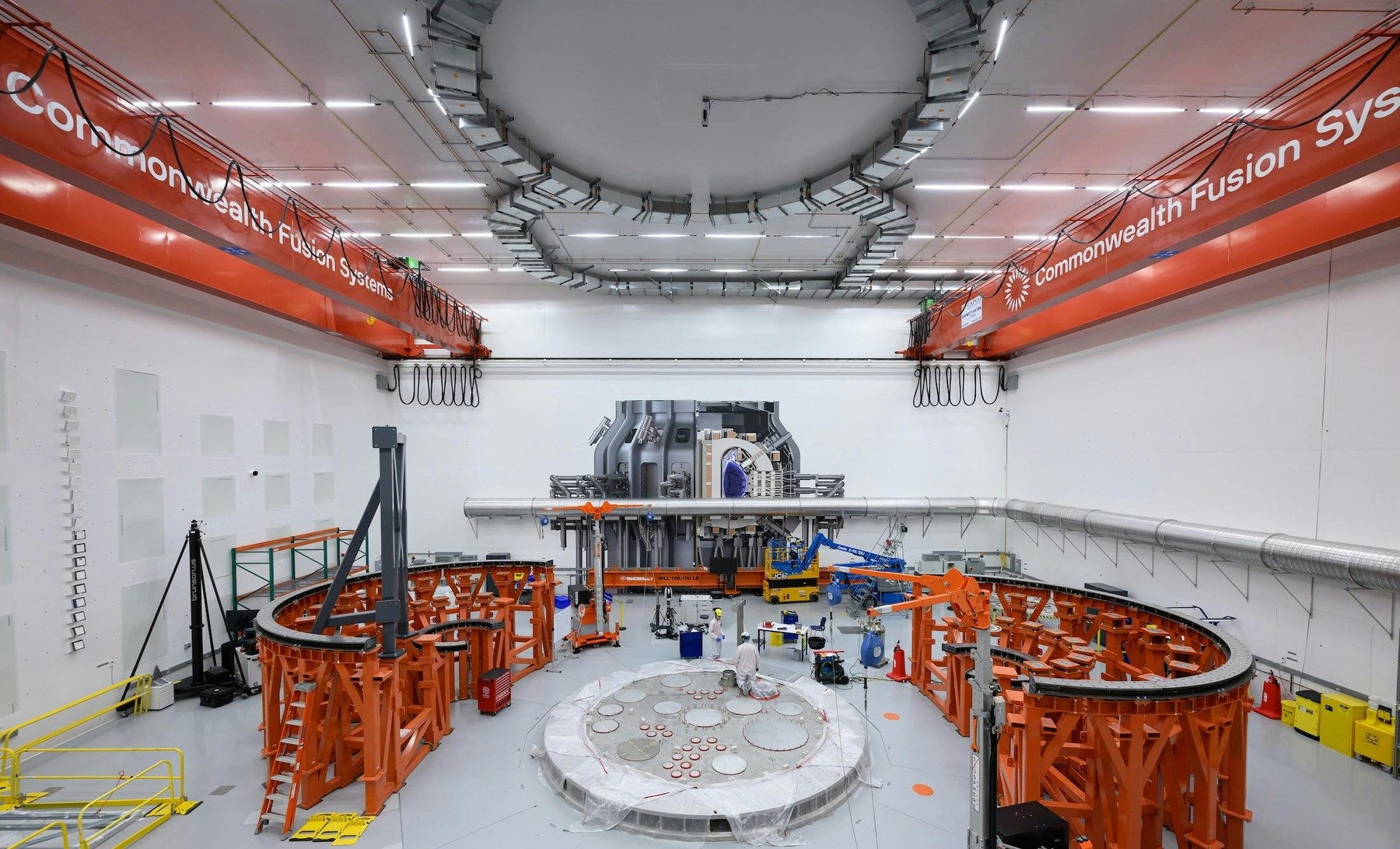Welcome to Climate Tech Pulse, your daily dose of market intelligence helping fuel the fight against climate change. From groundbreaking investments to cutting-edge research, we’re bringing you the latest in climate tech that’s shaping our future.
Don’t miss out on tomorrow’s climate solutions – subscribe now to stay ahead of the curve! https://lnkd.in/dwr7B9XJ
Today’s newsletter:
🔝Today’s Top Story: The U.S. Department of Energy announced a $518 million investment, under the Bipartisan Infrastructure Law, to fund 23 large-scale carbon storage projects.

📊 Today’s Data Point: A new study in Nature reveals that land plants absorb much more carbon dioxide than previously thought.
🌳 Climate Insider Intelligence: World Energy Outlook 2024 – a Deep Dive into Global Energy Transition.
DOE Invests $518 Million to Accelerate Carbon Storage Infrastructure, Create High-Quality Jobs Across 19 States
Major Investment in Carbon Storage Infrastructure
The U.S. Department of Energy (DOE) announced a $518 million investment, funded by the Bipartisan Infrastructure Law, to support 23 projects aimed at developing large-scale carbon storage infrastructure. These projects, spanning 19 states, are part of the CarbonSAFE Initiative, which focuses on reducing CO2 emissions from industrial operations and legacy emissions, while creating sustainable local jobs and enhancing environmental justice.
Phases of Carbon Storage Projects
The selected projects are divided into four phases of development under CarbonSAFE. Phase II focuses on feasibility studies for potential storage complexes, Phase III on site characterization and permitting, and Phase IV on construction of storage facilities. These facilities will have the capacity to store 50 million metric tons of CO2 over a 30-year period, ensuring safe and permanent carbon sequestration.
Community and Environmental Impact
All projects are required to submit Community Benefits Plans, addressing key priorities like labor engagement, job quality, and benefits for disadvantaged communities under the Justice40 Initiative. The DOE also seeks input from stakeholders through a Request for Information (RFI) to improve the CarbonSAFE Initiative, ensuring that it supports the most responsible and effective deployment of carbon storage infrastructure. Read More
Market Movers
- British startup Drift has secured £4.65 million in seed funding to develop AI-powered sailboats equipped with underwater turbines and electrolyzers, producing over 140 tonnes of green hydrogen annually at sea. Read More
- Lagos-based climate tech startup Earthbond, which provides solar energy solutions to Nigerian SMEs through group financing and a marketplace of solar installers, has secured undisclosed funding from Madica to address Nigeria’s $14 billion off-grid generator market. Read More
- Kenyan cleantech startup Octavia Carbon has raised $5 million to develop its Direct Air Capture plant, utilizing geothermal energy to reduce CO2 extraction costs and storing captured carbon underground in Kenya’s Rift Valley while generating revenue through carbon credits. Read More
Tech Spotlight
Advances in Electrochemical CO2 Reduction: Triazole-Based Catalysts for Methane Production
Image Credit: phys.org
Source: Chinese University of Hong Kong, University of Auckland, National Yang Ming Chiao Tung University
In a study published in Nature Energy researchers unveiled a new triazole molecular catalyst that efficiently converts carbon dioxide (CO2) into methane (CH4) through the electrochemical CO2 reduction reaction (CO2RR). This triazole-based system demonstrates both high efficiency and turnover frequency, paving the way for alternative methods of CO2 reduction that extend beyond traditional metal-based catalysts.
Commercial Viability
Market Impact:
The introduction of triazole molecular catalysts opens up new possibilities for converting CO2 into useful fuels, such as methane, with higher selectivity and tunability. This could enhance the commercial viability of electrolyzer technologies that focus on CO2 conversion, potentially driving investment in alternative carbon utilization methods.
Cost-Effectiveness:
Compared to metal-based catalysts like copper, silver, and gold, triazole molecular catalysts offer more tunability, potentially leading to better efficiency at lower costs. If further developed, this could reduce the need for precious metals in electrochemical CO2 reduction, offering a more cost-effective route to methane production.
Technical Viability
Technology Challenges:
While promising, the long-term stability of triazole-based systems at industrial current densities remains a challenge. Current research is focused on optimizing the catalytic mechanism and enhancing the durability of these catalysts under high current conditions.
Efficiency Consideration:
The research achieved a Faradaic efficiency of 52 ± 4% for CO2-to-CH4 conversion, with a turnover frequency of 23,060 h−1. This high level of efficiency and activity suggests that triazole molecular catalysts could eventually outperform traditional metal catalysts in electrochemical CO2 reduction.
Environmental Viability
Sustainability Alignment:
This breakthrough aligns with global sustainability goals by offering an alternative pathway for CO2 utilization, potentially reducing atmospheric CO2 levels while creating valuable fuels. By relying on more tunable, non-metallic catalysts, this technology could contribute to more sustainable fuel production methods.
Climate Impact:
The ability to selectively convert CO2 into methane has important implications for climate mitigation, as it presents a way to repurpose captured CO2 into energy resources. This technology could complement other carbon capture and utilization strategies, helping to reduce reliance on fossil fuels.
Scaling Potential
Investment Strategies:
Further research into triazole molecular catalysts could attract investment from industries looking to scale electrochemical CO2 reduction. As non-metallic catalysts offer advantages in tunability and cost, funding for CO2-to-fuel technologies may shift toward molecular catalysts like these.
Future Expansion:
The scalability of triazole-based CO2 reduction systems will depend on advancements in maintaining catalyst performance at industrial scales. Pilot studies have shown promise, but further work is needed to ensure that this technology can be applied broadly across industries.
Long-Term Implications
Redefining CO2 Reduction:
This discovery challenges the dominance of metal-based catalysts in CO2 reduction, suggesting that molecular catalysts like 3,5-diamino-1,2,4-triazole could redefine how CO2 is converted into valuable chemicals and fuels. Future research may expand this approach to other hydrocarbons or chemicals.
Strategic Vision for Growth:
By focusing on molecular catalysts for CO2 conversion, the research sets the stage for a new era in carbon utilization technologies. A balance between catalytic performance, scalability, and cost will be crucial to integrating these methods into future energy systems. Read More
Policy Pulse
This section includes global updates on climate change policy, governance and regulation.
German regulators approve construction of nationwide hydrogen network.
German regulators have approved the construction of a €19.8 billion nationwide hydrogen pipeline network, set to transport 278 terawatt hours annually by 2032, marking a key step in Germany’s transition toward a renewable energy-based economy, with substantial private sector investment and capped state subsidies.
Why it Matters: This approval is crucial as it accelerates Germany’s shift from fossil fuels to renewable energy, positioning hydrogen as a cornerstone of its future energy system while mobilizing significant private sector investment. Read More
Today’s Climate Data Point
A recent study published in Nature reveals that land plants are absorbing significantly more carbon dioxide than previously estimated. The research, led by Cornell University and supported by the U.S. Department of Energy’s Oak Ridge National Laboratory (ORNL), suggests that terrestrial ecosystems are sequestering about 31% more CO2 than older estimates. This could have significant implications for improving climate models and understanding the role of natural carbon sinks in mitigating greenhouse gas emissions.
Key Findings:
Revised Carbon Absorption Estimate:
The global Gross Primary Production (GPP)—the total amount of CO2 removed from the atmosphere by plants via photosynthesis—is now estimated at 157 petagrams of carbon per year. This represents a significant increase from the previous figure of 120 petagrams, established four decades ago.
Role of Carbonyl Sulfide (OCS):
The research used carbonyl sulfide (OCS) as a proxy to measure photosynthesis on a global scale. Unlike CO2, OCS can be tracked more reliably through the air-plant exchange processes, making it a better tool for estimating large-scale photosynthetic activity over extended periods.
Pan-Tropical Rainforests:
Rainforests, particularly in tropical regions, accounted for the largest discrepancy between previous and updated estimates. Ground measurements indicated that these forests are much more efficient at sequestering CO2 than previously thought, positioning them as critical natural carbon sinks.
Mesophyll Diffusion Model:
The research introduced an improved understanding of how CO2 moves through plant leaves into chloroplasts, where photosynthesis occurs. This process, called mesophyll diffusion, is crucial for accurately predicting how plants will respond to environmental changes and climate conditions.
Implications:
Improved Climate Models:
With a better understanding of global GPP, scientists can improve their Earth system simulations, leading to more accurate predictions about future climate scenarios. This will enhance global efforts to mitigate climate change by providing more reliable data on natural carbon sinks.
Tropical Forest Carbon Cycle:
The study’s findings are particularly relevant for tropical rainforests, which play an outsized role in global carbon sequestration. Incorporating these updated processes into climate models could help reduce uncertainty in predictions of tropical forest responses to climate change.
Policy Considerations:
This data underscores the importance of preserving rainforests and investing in reforestation efforts to maximize natural CO2 absorption. Protecting these critical ecosystems could be a low-cost, high-impact strategy for climate mitigation.
Climate Insider Analysis:
The new insights into how land plants absorb carbon dioxide present a significant breakthrough in climate science. By accurately estimating global GPP, scientists can now refine their climate models, providing governments and industries with more reliable data for making informed decisions. Tropical rainforests emerge as more vital than ever in the fight against climate change, emphasizing the need for sustained protection and management of these ecosystems. The advancements in understanding photosynthetic processes could help shape future policies that balance environmental conservation with climate goals. Read More
Climate Insider Intelligence: World Energy Outlook 2024 – a Deep Dive into Global Energy Transition
The International Energy Agency’s latest report reveals that global energy demand continues to soar, yet fossil fuels still dominate the mix. While clean energy adoption is accelerating, the transition isn’t happening fast enough to meet climate targets. Can renewables overtake fossil fuels by 2030? What are the key challenges holding back the clean energy shift? In this deep dive, Climate Insider uncovers the opportunities—and the roadblocks—on the path to a sustainable future.Explore the insights and what they mean for the global energy landscape. Read More








